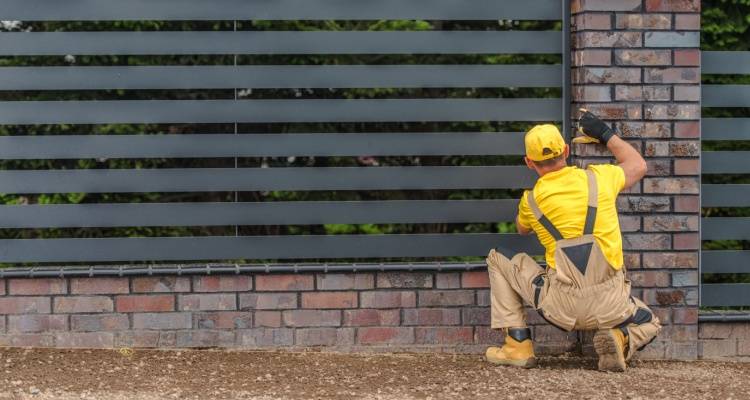Summer House Cost
- The average cost of building a summer house is around £3,000
- The job will approximately take between 3 - 14 days to complete
- Larger or more complex projects may take longer
- A breakdown of pricing information including types of summer houses and everything that such a task entails
- How long the job may take and a general overview of what types of jobs can be performed
- How to find and hire a builder
Looking for the average cost of a summer house?
The cost of building a summer house will depend on the size, style and materials used. It will also vary depending on your region.
How much do summer houses cost exactly?
Building a basic prefabricated summer house kit is going to cost around £500 (not including labour fees), while for a sizeable bespoke summer house you can expect to reach the £10,000 range easily.
What can this guide help you with?
We have broken down everything you need to know about building a summer house in your garden space, from a small summer house to a large summer house, along with other types, and all the costs included.
Are you ready to get a quote for your job?
We have a range of builders ready to give you a free quote!
So, take a read below!

£3,000
Table of Contents
- How Much Is A Summer House?
- Labour Costs and Timescales
- Supply Only Costs
- Additional Costs
- Cost Factors of Building a Summer House
- What's Involved in Building a Summer House?
- Types of Summer House
- What Are the Benefits of a Summer House?
- Can I Build a Summer House Myself?
- Planning Permission for a Summer House
- Building Regulations for a Summer House
- Alternatives to Summer House
- Summer House Maintenance
- Cost of Removing a Summer House
- Hiring a Summer House Builder Checklist
- FAQs
- Sources
How Much Is A Summer House?
A small, basic, prefabricated summer house kit can cost as little as £500 (not including labour fees) and the prices can vary right the way up to £10,000+ for a more extravagant larger summer house.
Building a summer house is quite a complex job and you should expect the entire job to take a good few weeks to complete. A typical tradesperson will charge around £170-£250 per day and so you can expect the cost of labour to usually fall above the £2000 mark.
Garden design is hugely popular in the UK due to the vast variety of garden renovation TV programs. As well as this, the rise of more DIY stores and garden centres selling a huge range of innovative products, many people are beginning to see their gardens as extensions of their homes, and many want to put them to good use for both relaxation and entertaining.
Adding a summerhouse adds another dimension to the garden and can be a great place to entertain guests, relax, or even provides a new place for children to play.
Garden outbuildings can vary significantly in their style, size and specification. The price to build a summer house depends on the size of the building, whether a modular or bespoke design, the building materials used, plus the cost of the finishes, fixtures and accessories you choose.
Another cost consideration is whether planning permission is required. The location, size, height, and intended use of your summer house will determine whether planning is required or not.
Before you purchase a summer house, you need to ensure that you have solid foundations in which it can be built upon. If you opt to hire a tradesman to build your summer house for you, they can usually build the foundations for you.
However, if you are choosing to build your summer house yourself, you need to ensure that you have these foundations down first.
If you are choosing to build a bespoke summer house from scratch, you can expect this to take longer and cost more than a prefabricated summer house.
I have concrete slabs as my garden flooring do they need to be removed to build a summer house/ room.
Summer House Prices
| Job Description | Duration | Material Costs | Labour Costs |
|---|---|---|---|
| Small Contemporary Summer House | 5-10 days | £500-£3000 | £850-£2800 |
| Large Contemporary Summer House | 7-14 days | £2000-£5000 | £1200-£3800 |
| Small Traditional Summer House | 5-10 days | £350-£1500 | £850-£2800 |
| Large Traditional Summer House | 7-14 days | £1000-£3000 | £1200-£3800 |
| Small Corner Summer House | 3-7 days | £600-£1200 | £500-£1900 |
| Large Corner Summer House | 5-10 days | £1000-£2000 | £850-£2800 |
Labour Costs and Timescales
The cost for labour when building a summer house can vary depending on a wide variety of factors. Below is a list of the main factors that may affect the cost of labour on building a summer house.
Size of Summer House
The size of your summer house can greatly affect the cost of labour. The larger the summer house, the longer it is going to take to build and so, therefore, the more you can expect to pay for labour.
For example, while the average project can take up to 14 days to complete, this may be longer in the event of larger or more complex projects. Especially if additional groundwork or planning permissions are required.
The average contractor will charge somewhere between £170-£250 per day for labour, and so you can see how the cost can really add up for larger projects.
Your Location
Your location in the UK can affect the cost of labour when it comes to building a summer house. Those located in London can expect to pay as much as £30-£100 more per day for labour than those based in the North of England. This cost can really add up when the work is spread across numerous days or even weeks.
Materials Used
The materials used to build your summer house can affect the overall cost that you will pay for the labour. A concrete summer house will usually take longer to build than a wooden summer house.
If you choose to have a concrete summer house built, you can expect to pay around £1000-£5000 more for the labour, depending on the size of the summer house that you are having built.
Bespoke or Not
If you choose to have a prefabricated summer house built, this is going to cost a lot less than a custom summer house. A custom summer house will take longer to build and will require further work such as design and calculations to ensure that your dream summer house is going to be safe and secure enough to use.

The labour costs for a custom summer house can cost up to £10,000 more than a prefabricated summer house depending on the size and complexity of the job.
Additional Work
Additional work will result in additional costs for labour. If you want any extras added on to your summer house such as extra windows, special materials, or decoration, then you are going to end up paying more for the extra hours that these additional jobs take to complete.
Type of Labourer
While we mention labour costs and the amount for a contractor, these prices can still vary depending on the tradesmen you require. Specialist trades including joiners or electricians often charge higher rates for specialised jobs, whereas a general builder or handyman may offer more flexible pricing.
Supply Only Costs
There are many different types of prefabricated summer houses available to buy. Below are some of the most popular types of summer houses and their costs.
Contemporary Summer House
The contemporary style of summer house is a more modern take on a traditional summer house. This type of summer house will add a modern, stylish feel to your garden. Prices for a modern summer house range from £500-£5000 depending on the size that you are looking for. You can expect to pay a lot more for a large summer house than a smaller one.
Traditional Summer House
A traditional summer house is the perfect addition to your garden. It is a beautiful design that offers a wonderful place to relax and entertain from the comfort of your own garden.
Prices for a traditional summer house range from £350-£3000 depending on the size that you are looking for. You should expect to pay a lot more for a large traditional summer house than you would for a smaller one.
Corner Summer House
Corner summer houses are perfect for those with smaller gardens or who have limited space available for their summer house. They are designed to fit into small spaces and are perfect for using up that extra corner space in your garden.

The price for a corner summer house ranges from £600-£2000 depending on the size that you are looking for. Most corner summer houses are relatively small in comparison to the larger traditional and modern summer houses.
Additional Costs
There are a number of additional costs that you may need to think about during a summer house installation. Below is a list of some additional costs that you may need to consider when it comes to building your new garden summer house.
- Electricity and Plumbing - Depending on the plan of use, you may need to hire a professional electrician to install light fittings or fit the appropriate plug sockets and other electrical wiring. Likewise, if you need any water supplies a plumber will carry out the work for you.
- Outdoor lighting – Outdoor lighting can come in a number of different styles to suit your personal taste and the average prices range from £10-£100
- Laying garden turf – The cost of laying garden turf averages out at around £12-£20 per square metre
- Garden decking – The cost of garden decking ranges depending on the style that you choose, however, as a guide a decent timber decking usually costs around £50-£100 per square metre
- Garden waste removal – Depending on the amount of waste that you have and the amount of time it takes to be removed, this should cost on average between £100-£200
- Fixtures and Fittings - This can include all the finishing touches once building your summer house has been completed. Whether it be furniture such as chairs and tables (on average between £50-£800), curtains, cushions and other decorative items, or by adding shelves and storage facilities.
Cost Factors of Building a Summer House
There are a number of things that can affect the cost of your summer house. Below is a list of some of the main factors that can affect the cost of your new summer house.
Type of Summer House
The type of summer house that you choose to have built can affect the cost. As mentioned earlier, a contemporary summer house can range between £500-£5000, a traditional summer house can range between £350-£3000 and a corner summer house can range between £600-£2000.
Size of Summer House
The size of your summer house can greatly affect the cost that you can expect to pay. A small 7’x5’ summer house can cost as little as £350 whereas a larger 12’x12’ summer house can cost up to £5000.
Location
Your location in the UK can affect the cost of having your summer house built. Those located in London can expect to pay as much as £30-£100 more per day for labour than those based in the North of England. This cost can really add up when the work is spread across numerous days or even weeks.
Labour
Contractors can charge varying prices and so the labourer that you choose to complete the work on your summer house can affect the overall cost of the job.
If you choose a contractor that charges a higher daily rate, you will end up paying a lot more as the cost of the job will add up over the days and weeks that it takes to get the job completed. Daily rates tend to range between £170 and £250 per day, although likely to be higher in areas such as London and the South East due to the local cost of living being higher than the National average.
Extensive Groundwork
If your garden is not completely level, it may take a lot more groundwork to get the foundations level enough to securely and safely sit your summer house on. The more extensive the groundwork that is needed, the more you can expect to pay as this is going to take longer so will, therefore, cost more in labour.

What's Involved in Building a Summer House?
- Step One – Create a detailed build plan on paper before starting construction. This should include everything from how many doors and windows you want to materials and dimensions. Think of all the critical information a builder would need to complete the job.
- Step Two – Start the build by laying a strong foundation that's flat, level, and even on all sides to support a stable structure. A concrete base offers maximum durability, while a slab base provides flexibility if you want to move the structure later.
- Step Three – Install the roof. A tin roof is the most budget-friendly option, while a shingled roof gives a more polished, high-end appearance. Once your roof is attached, the overall structure of your summer house will start to take shape.
- Step Four – Install the flooring and apply any finishes. Sanding wooden floors will create a smooth, safe surface, which can then be polished if desired. Allow everything to dry fully before proceeding to the next step.
- Step Five – Add the internal walls, leaving space for windows and doors. Sand down any wooden surfaces for a smooth finish, especially if you plan to paint.
- Step Six – The help of a second pair of hands to install the windows and doors is highly recommended, as they can be tricky to fit alone and are essential to the structure.
- Step Seven – Ensure your summer house is structurally sound before adding the finishing touches to create a personalised space that’s fit for purpose.
Types of Summer House
There are a number of different summer house designs. Below is a list of some of the most popular choices when it comes to a summer house and a little bit of information on each of the different types.
Contemporary Summer House
For people that are looking for a more modern design of summer house a contemporary summer house is the ideal choice. A contemporary summer house tends to feature large windows and doors that offer a lot of natural light. A contemporary summer house is perfect for those that want to give their garden a more modern flair.
Traditional Summer House
One of the most popular choices of summer house is a traditional summer house. These summer houses usually feature Georgian windows and are commonly fitted with an apex roof shape. Traditional summer houses are perfect for those that want to keep an older aesthetic look within their garden.

Corner Summer House
It can sometimes be difficult to find the room needed to fit a summer house in your garden. This is particularly true for those who have smaller garden spaces.
These circumstances are where a corner summer house would come in perfect as they are specially designed to fit into a corner, so you can make the most of all of your available garden space. These designs of summer house typically feature two opening side windows and double doors at the front that give you a panoramic view of your garden.
Small Summer House
An alternative to a corner summer house is a small summer house which is also perfect for those with smaller gardens. A small summer house can usually be as small as 6’x4’ which makes them perfect as a small, quiet place to relax.
It can also make a great storage place to keep your garden furniture during the winter months. Small summer houses are a convenient, budget-friendly option.
Log Cabin Summer House
A log cabin style of summer house is a more luxurious summer house. They look absolutely magnificent in your garden and are very strong and sturdy. They are built to withstand harsh weather conditions and are guaranteed to last many years.
Summer House Shed
Summerhouse sheds are a combination of a summer house and a shed. This provides you with a lovely place to relax as well as a great place to store your garden items.

These types of summer house are ideal for people who like to utilise their space as best as possible.
What Are the Benefits of a Summer House?
There are a number of benefits to building a summer house. Below are some of the main benefits that come along with having a summer house installed in your garden.
- Extend Your Living Space – A summer house provides extra living space for you and your family
- Provides a Quiet Study – You can create an outdoor office or workspace using a summer house
- Provides Guest Accommodation – If you are having guests over, the summer house can provide extra accommodation for your guests
- A Great Place for Children - A summer house provides a great place for children to play
- Enjoy Your Garden in All Weather – A summer house allows you to enjoy your garden in both rain and shine
Can I Build a Summer House Myself?
If you have suitable building experience, then it is possible to build a summer house yourself, with a basic prefabricated kit being the most suitable option. However, whatever the design, building a summer house is a very big job and can take several weeks to complete.
Plus, for some parts of the job, you need a second pair of hands to help you. You may save around £500-£3000 on labour costs if you choose to install your own summer house, but realistically, using the assistance of a professional is always highly recommended.
If you choose to hire a contractor to complete the work, you can live with the satisfaction that you will be getting a very well-made and secure summer house built.
Although it can be costly, an experienced contractor is likely to complete the job in far less time than you would manage on your own. Plus, they will have all the tools and materials needed on hand – ensuring any building regulation safety precautions are followed along the way, so you wouldn’t have to worry about a thing.
When it comes to building structures, especially ones your family will enjoy, you want to make sure that it is a sturdy build. This is why it would be extremely beneficial to have a professional carry out the work for you.
Planning Permission for a Summer House
In the majority of cases, planning permission is not required when it comes to building a summer house, as long as it meets the conditions of Permitted Development Rights. These rights allow certain types of outbuildings without formal planning consent, as long as you follow limits on height, placement and what it is going to be used for.
For example, planning permission must be obtained if you are thinking of putting a summer house in the front of your home or if it will take over more than 50% of the land around your house. It is also not allowed to be used as additional accommodation, without first obtaining the correct planning permission.
There are also some restrictions on how high your summer house can be before needing planning permission. It must not exceed 4m in height for a dual-pitched roof, 3m for any other roof type and 2.5m in height if it is within 2m of your property boundary.
However, if your property is a listed building or located on designated land such as a conservation area, an area of Outstanding Natural Beauty, a national park, or a World Heritage Site it is likely that you will need planning permission to add any outbuildings regardless of the above scenarios.
If you live in an area such as this, you will need planning permission to add an outbuilding to the front of your house, and if you want to add an outbuilding more than 20m away from your house, this must not be larger than 10m².
Where applicable, planning permission fees include the £258 householder application which can be applied for through your local planning authority (LPA) which is usually run through your local council.
Building Regulations for a Summer House
Building regulations will usually not apply if you want to put up a summer house providing it is less than 15m² and does not contain any accommodation for sleeping.
Also, if the floor of the summer house is between 15-30m², you will not normally be required to apply for building regulations approval as long as the summer house doesn’t contain any sleeping accommodation. It also has to be at least 1m away from the boundary.

The vast majority of the time, you will not need to apply for building regulation approval for a typical summer house. However, if you wish to check your project meets the appropriate guidelines then ask your local council’s Building Control department or check if a structural engineer’s input is needed.
Alternatives to Summer House
There are a number of alternatives to building a summer house. Below are some of the most popular alternatives that people choose over building a summer house.
Garden Shed
A garden shed is perfect for those who are looking for a place to store their outdoor items such as garden furniture and gardening tools. A garden shed is not really suitable for relaxing in as they tend not to feature any windows and are usually much smaller in size than a typical summer house. Garden sheds cost an average of £200-£500 depending on the size.
Conservatory
A conservatory is a room with a glass roof and walls that is attached to a house on one side, usually at the back. A conservatory is a great place to relax but may take longer and be more difficult to build than a summer house.
Unlike a summer house, a conservatory has to be built as an additional room on to the side of your house. A typical conservatory usually costs on average around £5000-£15000.
Gazebo
If you are simply looking for a space to relax without having to worry about rain in your garden, a gazebo would work perfectly.

There are many different types of gazebo include ones with zip-up walls and even plastic windows. Depending on the size and style, a gazebo will usually cost on average between £50-£400.
Summer House Maintenance
There are a number of things that you may be required to do in order to maintain your summer house.
If your summer house is made from wood, it will need regular treatment to avoid rotting and mould. You should use a high-quality timber treatment or a wood stain at least once per year.
If your wood begins to crack or develop holes, use a filler to avoid any further damage. A typical 5L bottle of wood preserver costs on average between £15-£22.
Regularly check the roof and be sure to treat any rips, tears, or holes. Always be sure to fix damage to the roof immediately to avoid further damage to the rest of the summer house.
If you leave a roof damaged, it could cause leaks and other problems that may be irreversible if not treated immediately.
Be sure to air out your summer house regularly. As there is no built-in ventilation, condensation can develop inside the summer house and this can lead to mould. You should air your summer house out all year round including during the winter months.
Paint your summer house regularly. This helps to keep moisture out of the wood and helps to keep the moisture out of your summer house.
Cost of Removing a Summer House
You may need to remove a summer house if your neighbours are complaining about the sight of it, if you want to build a new one, or if you simply just don’t want it anymore.

Below is a simple guide on how to remove a summer house:
- Firstly, you should remove the corner trims, finials, and the fascia boards
- Next, remove the doors and windows
- Thirdly, if you have a felt lining on the roof, untack the lining and remove all roof boards
- Then, remove the framing of the roof and remove the roof braces
- Next, unattached the summer house from the floor or underlining
- Unscrew and unattach all corners and remove any remaining pieces of the summer house
- Finally, stack all of your waste and arrange for it to be removed
If you want to hire a contractor to remove your summer house for you, you would be looking at a cost of around £14-£25 per hour. The length of time that it takes to remove will depend mainly on the size of your summer house.
The cost for garden waste removal is usually somewhere between £100-£200. The actual cost you pay will depend on the size of your summer house and how much waste there is to remove.
Hiring a Summer House Builder Checklist
Below are a few things that you need to consider when hiring someone to build your summer house:
- Do they offer any guarantees?
- How much experience does the contractor have in building summer houses?
- What designs do they offer?
- Can they provide a quote with the prices narrowed down to each part of the job?
- Be sure to obtain at least 3 quotes to ensure you are getting a good price for the work.
FAQs
What can I put in a summer house?
How can I insulate my summer house?
Can I put a summerhouse on decking?
What is the most popular style of summer house?
What is a contemporary summer house?
Sources
https://www.therange.co.uk/garden/garden-furniture/garden-seating/#sort=relevance&page=1&lpp=24
https://www.gardenbuildingsdirect.co.uk/blog/summerhouses-the-ultimate-guide
https://www.chelseasummerhouses.co.uk/2015/08/24/benefits-of-a-summerhouse
https://www.planningportal.co.uk/info/200130/common_projects/43/outbuildings/2
https://www.gardenbuildingsdirect.co.uk/blog/aftercare-summerhouse-maintenance
https://www.gardenlifelogcabins.co.uk/blog/best-foundations-summer-house-log-cabin










